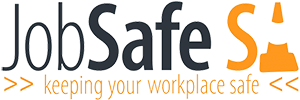Food / Beverage
 Food and beverage manufacturing covers all companies engaged in the preparation and packaging of primary goods. The industry actually comprises over 30 different industries ranging from piggeries, sugar refineries and grain mills to beer brewing and whisky distilling.
Food and beverage manufacturing covers all companies engaged in the preparation and packaging of primary goods. The industry actually comprises over 30 different industries ranging from piggeries, sugar refineries and grain mills to beer brewing and whisky distilling.
INJURIES
The main causes of injuries within this industry continue to be:
- manual handling / musculoskeletal injury
- slips on wet or food contaminated floors
- falls from heights
- burns
- struck by something (e.g. sharp knives or falling objects)
- plant
HAZARDS
Slips and Trips
Slippery floors in the workplace are a serious hazard and can result in far more serious accidents than simply slipping and falling over. It is a requirement that floors should be slip-resistant, but floors can become slippery when substances are spilt on them, or while being washed. Objects such as boxes, cartons and bins positioned in high people traffic areas can pose hazards.
Ways to reduce the risk of slips and trips:
- regular cleaning of floors is necessary to maintain a safe surface. However choose the timing of routine floor cleaning so that people are not put at risk and hygiene is not compromised.
- do not leave floors wet after cleaning – clean them to a completely dry finish if at all possible. If clean-to-dry is impossible then use barriers and wet floor warning signs to keep people off the wet area.
- extension cords should never be placed across walk ways.
- learn the procedures for cleaning up spilt substances and removing objects that are a risk to people.
- clean all spills immediately
- keeping floors and walkways free of materials, boxes, bins, equipment and rubbish.
- maintain equipment to prevent any leaks of oil, water etc.
- avoid contaminating the floor with dry materials (like plastic bags or flour dust),
as these materials can create a very slippery surface. - proper floor surfaces can have enough roughness to provide grip
Some things to look for include:
- unstable, loose, uneven or worn floor surfaces
- obstacles blocking people’s clear view of walkways
- low levels of light making it difficult to see
- unexpected changes in flooring materials
(shoes, for example, grip differently on concrete compared to tiles) - highly sloping floor surfaces
- objects in the path of people
- unstable loads or having to reach too far to complete a task
- unexpected changes in flooring materials
Selecting footwear
- Footwear can be important in preventing slips and the selection of the right shoe sole can have a big effect on reducing slip injuries.
- Different types of footwear can perform differently in specific situations. What may be okay on cement floors is not necessarily right for tiled.
Urethane and rubber soles are often among the least slippery on wet floors. - Sole tread patterns should not become clogged with any waste or debris on the floor. If they do then that design of sole is unsuitable for your situation.
If anti-slip footwear is needed to properly control slip risks then the employer should provide and pay for it.
Other hazards in the manufacturing industry include:
Manual Handling Noise Hazardous substances Forklifts
Hot/Cold Environments Fatigue Plant/Machinery
| Noise | Plant/Machinery | Manual Handling |
| Hot/ Cold Environments | Fatigue | Hazardous Substances |
| Forklifts | ||
Note:
Many companies have been found in breach of their OHS obligations to employees.
Take an informative look at the successful convictions by SafeWork SA
Acknowledgements:
Workplace Health and Safety, Safety sense Queensland Government
SafeWork SA www.safework.sa.gov.au
